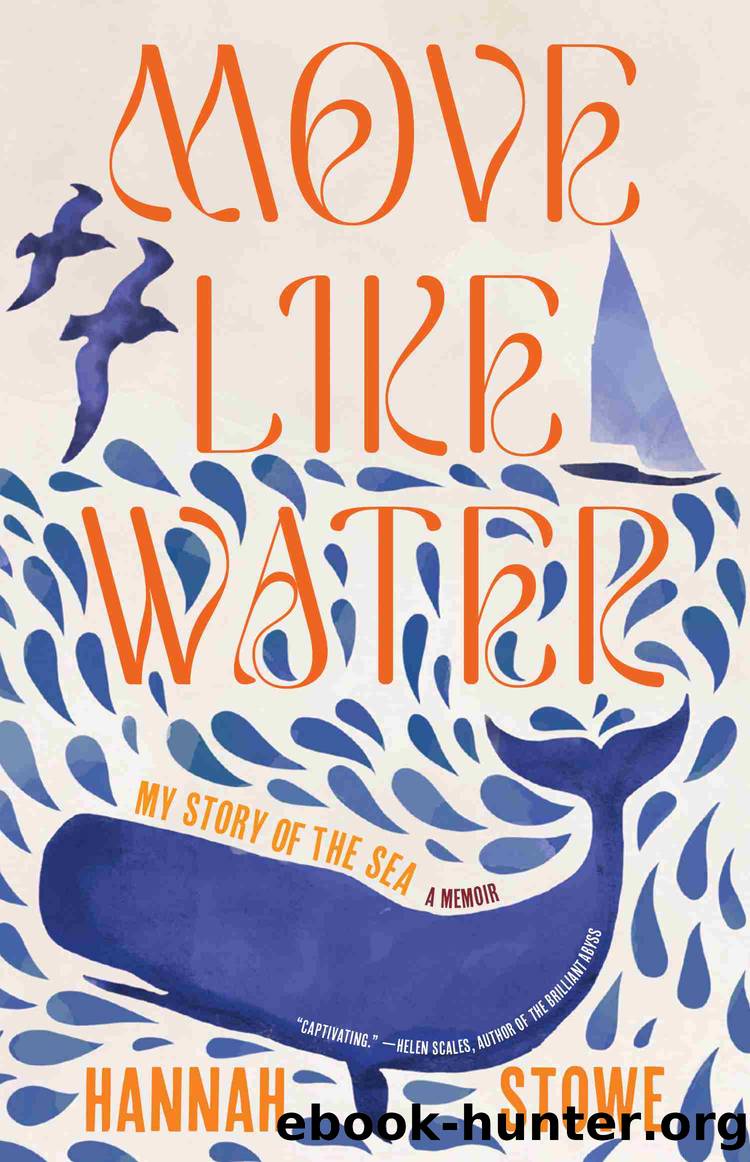Move Like Water by Hannah Stowe

Author:Hannah Stowe
Language: eng
Format: epub
Publisher: Tin House Books
||||
Our albatross does not travel with friends, she leaves alone. For all the grandeur of the species and its reputation for epic flight, the reality for fledglings involves a large amount of struggle. Although she has spent months growing and exercising her wings, preparing for flight and flying itself are two entirely different things. Her moment of air and grace is short-livedâshe finds herself plummeting towards the surface of the water with all the gravity of her freshly-fledged weight. Over the next ten to fifteen days, she will spend hours or even whole days on the surface of the sea, periods of swimming and resting interspersed with flight as she moves northwards. Day by day she builds strength, technique, and endurance.
There seem to be a few reasons why subtropical waters are a favourable destination for newly-fledged wandering albatross. The weather is warmer, so the juvenile birds have to expend less energy on keeping warm while they are learning to forage. There is also less competition for food. Of all the birds foraging in the Southern Ocean, the wandering albatross is the apex predator, but although they can outcompete all other species of albatross and petrels, they still have to contend with other wandering albatross. The mature birds tend to forage and wander within the sub-antarctic and antarctic regions, making the subtropics a less competitive place for the juveniles to refine their foraging technique. Of course, there will still be competition for food, but it will be among individuals of a similar stage of development and experience.
Of all the stages of life of a wandering albatross, least is known about this juvenile stage. Fledglings show the same behaviour, navigating into subtropical waters by some unknown mechanism that combines the innate and the learned. Our fledgling left the nest without her parents. Either one or both birds may have returned to Bird Island, perhaps with a final meal for her, only to find the nest empty, their chick fledged. Her fledging concludes the breeding cycle for her parents. The pair would then have parted ways, each headed to wander the ocean alone, embarking on solo voyages with the promise that they will reunite again on Bird Island in two yearsâ time. If they both return to the breeding colony safely, they will greet each other, an egg will be fertilised, hatched, and the cycle begins again. Although our chick fledged in the same period as many other successful chicks, they do not travel as a flock. She flies solo. Each day she can fly a little further, a little faster. As her prowess in the air develops, her need to spend time on the surface diminishes. In six monthsâ time she will have the flight efficiency of an adult bird. That is, if she can survive the next six months.
For the wandering albatross, the highest mortality occurs within the first year of the juvenile period, specifically within the first two months that they spend at sea. Some may never learn to fly efficiently enough to be able to forage successfully.
Download
This site does not store any files on its server. We only index and link to content provided by other sites. Please contact the content providers to delete copyright contents if any and email us, we'll remove relevant links or contents immediately.
The Lonely City by Olivia Laing(4768)
Animal Frequency by Melissa Alvarez(4424)
All Creatures Great and Small by James Herriot(4267)
Walking by Henry David Thoreau(3921)
Exit West by Mohsin Hamid(3793)
Origin Story: A Big History of Everything by David Christian(3665)
COSMOS by Carl Sagan(3585)
How to Read Water: Clues and Patterns from Puddles to the Sea (Natural Navigation) by Tristan Gooley(3430)
Hedgerow by John Wright(3314)
How to Read Nature by Tristan Gooley(3290)
The Inner Life of Animals by Peter Wohlleben(3283)
How to Do Nothing by Jenny Odell(3263)
Project Animal Farm: An Accidental Journey into the Secret World of Farming and the Truth About Our Food by Sonia Faruqi(3189)
Origin Story by David Christian(3169)
Water by Ian Miller(3155)
A Forest Journey by John Perlin(3042)
The Plant Messiah by Carlos Magdalena(2900)
A Wilder Time by William E. Glassley(2833)
Forests: A Very Short Introduction by Jaboury Ghazoul(2814)
